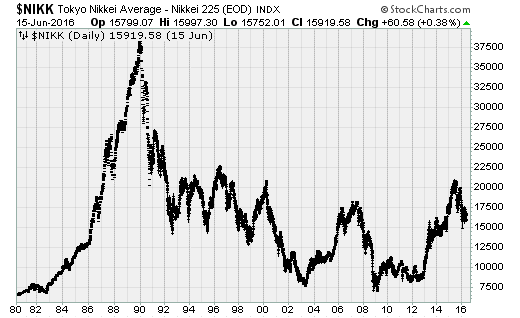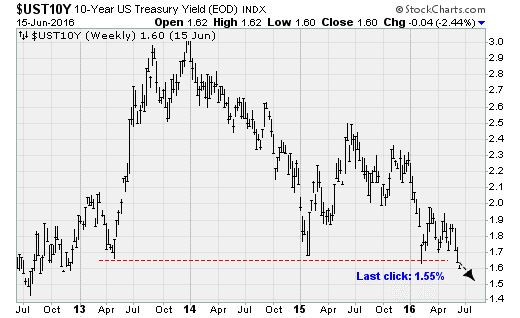Nervous about stocks? Time to seek "safe haven"
U.S. equities are swinging faster than a hoedown as investors try to digest a host of concerns, including next week's U.K. vote on whether to leave the European Union.
That's just for starters. Also causing consternation: uneven global economic data, an ongoing corporate earnings recession, currency volatility worldwide, and a growing sense that central banks are losing control of the situation.
As a result, large-cap stocks are on the verge of falling into the red for 2016 as a three-year sideways pattern that started in late 2014 grinds on. Yet a number of classic "safe haven" assets are roaring higher. For investors, this is a reminder about the importance of holding a well-diversified portfolio -- especially in times of market stress and uncertainty.
Modern portfolio theory, a Nobel Prize-winning idea from the early 1950s, posits that investors can maximize their investment returns and minimize their risk by holding a collection of assets.
For best effect, these assets should not be correlated with each other. For example, allocation should be made between defensive utility stocks and pro-cyclical basic materials stocks; boring telecoms and fast-growing technology; risky small-cap stocks and "risk-free" U.S. Treasury bonds. Precious metals play a role here as well.
The idea is that no matter the economic environment, a portion of your portfolio will be performing well. High inflation will benefit the stocks of companies in materials and precious metals. Recessions will boost utilities and bonds. Speculative bubbles would boost small-caps, and so on.
Of course, the idea isn't bulletproof. Although some fancy math underpins the theory, this isn't engineering or physics. Finance is based on economics, a social science that tries to predict -- with notoriously mixed success -- how people will react in different circumstances.
Casual investors and professional portfolio managers both must make assumptions about the likely risk and likely return of different assets when constructing a portfolio. Part of this is based on a historical observation about what has happened. The other part amounts to an educated guess about what's to come (and good luck with that). The kicker is an assumption that, while recessions and bear markets are always a possibility, growth and progress are inevitable.
So investors shouldn't become complacent.
Consider what has happened to Japanese investors over the last 26 years, as shown in the chart above. The Nikkei Average trades at a fraction of its late-1980s highs and has suffered a long sideways crawl. Including the ravages of inflation (unless one bought in the depth of fear and despair during the last two recessions), Japanese stocks have been a loser.
That said, safe havens this year are on a roll as investors brace for a period of ugliness in financial markets and the global economy.
This is best illustrated by the tide of money going into government bonds in recent weeks, which has pushed up prices and pushed down interest rates, as shown above. The yield on 10-year Treasury bonds has returned to lows not seen since 2012, a reflection of falling economic growth and inflation expectations by bond traders.
Earlier this week, German 10-year bonds traded with a negative yield for the first time ever. Japanese and Swiss bonds have been trading with negative yields for a while. According to Fitch, the volume of global government bonds trading with negative yield has crossed the $10 trillion mark for the first time, representing about 20 percent of total.
Gold and silver, a traditional refuge for antsy investors, have been on the move as well. The Gold Trust SPDR (GLD) has pushed to levels not seen since 2014 this week, up more than 25 percent from its low late last year.
So have defensive stocks. The Utilities Select SPDR (XLU), an exchange-traded fund that offers exposure to utility stocks in the broad S&P 500 market index, is enjoying a year-to-date gain of more than 18 percent. Compare that to a measly 0.8 percent rise for the overall S&P 500. The iShares Telecommunications ETF (IYZ) is up 10 percent for the year.


